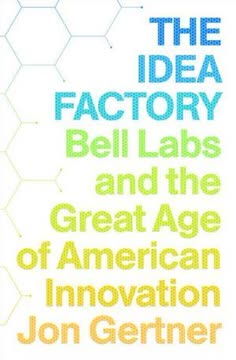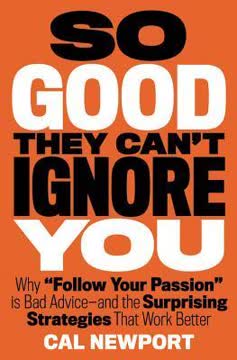重点摘要
1. 创新在互联环境中蓬勃发展
正如庞加莱所说,思想在群体中升起。它们在重视连接而非保护的液态网络中升起。
创新生态系统。 无论是在自然界、城市还是数字世界中,最具创新性的环境都具有共同特征。它们密集互联,允许信息和思想自由流动。这些环境促进了偶然的相遇和意外的连接,导致新颖的组合和突破。
创新空间的例子:
- 珊瑚礁:极其多样化的生态系统,具有复杂的相互依赖性
- 城市:历史上人类创造力和发明的中心
- 互联网:一个全球网络,促进了前所未有的信息共享和协作
这些环境的关键在于它们能够促进多样元素之间的连接,创造一个“液态网络”,在其中思想可以碰撞、结合并迅速演变。
2. 好点子源于小灵感的碰撞
一个新想法是探索你脑海中可能连接的相邻可能性的细胞网络。
思想的网络性质。 伟大的创新很少是单一“灵光一现”的产物。相反,它们通常是逐渐积累和组合较小的见解或“灵感”的结果。这些部分的想法需要时间和合适的环境与互补的灵感连接,最终形成完整的突破。
创新思维的特征:
- 对新连接和关联的开放性
- 能够同时保持多种想法在脑海中
- 耐心等待灵感发展和成熟
这一过程在大脑中得到了反映,神经元网络形成新连接以代表新颖的想法。通过培养多样的兴趣并接触各种信息,我们增加了灵感以富有成效的方式碰撞的机会。
3. 偶然性在突破性发现中起着关键作用
偶然性确实是由幸运的意外构成的,但使它们幸运的是你所做的发现对你有意义。
培养偶然性。 虽然偶然的发现可能看起来是随机的,但它们通常是通过创造增加有意义意外可能性的环境而产生的。这些环境鼓励探索、多样化的输入以及识别潜在有价值连接的能力。
增加偶然性的方法:
- 多样化的阅读和信息消费
- 跨学科的协作和网络
- 为无结构的思考创造时间和空间
- 接受新体验和新视角
偶然性不仅仅是关于偶然的相遇,而是关于准备好识别和利用意外的连接。通过拓宽我们的知识并保持对新可能性的开放态度,我们增加了偶然发现变革性见解的机会。
4. 适应:将旧想法重新用于新用途
新想法不会在群岛上茁壮成长。
重新利用的力量。 适应,即将现有特征或想法重新用于新功能的过程,是创新的关键驱动力。许多突破性的想法并非来自完全发明新事物,而是通过创造性地将现有概念或技术应用于新领域。
适应的例子:
- 古腾堡的印刷机:将葡萄酒压榨技术应用于印刷
- 羽毛:最初进化用于保温,后来适应用于飞行
- GPS:军事技术重新用于民用导航
适应强调了不同领域和行业之间交叉授粉的重要性。通过接触多样的想法和技术,我们增加了做出新颖连接并找到现有解决方案意外应用的能力。
5. 错误和噪音是创新的基本组成部分
正确让你停留在原地。错误迫使你探索。
错误的生成力。 错误和意外结果常常导致新发现和创新。虽然精确和准确很重要,但一个过于受控或无错误的环境可能会扼杀创造力并限制新可能性的探索。
接受错误的好处:
- 迫使重新评估假设
- 鼓励探索替代解释
- 可能导致偶然的发现
在生物进化和人类创新中,某种程度的“噪音”或变异是进步的必要条件。这就是为什么一些最具创新性的公司和研究实验室在其过程中故意引入随机元素或鼓励有计划的冒险。
6. “相邻可能性”的力量在于扩展创新
相邻可能性是一种悬浮在当前状态边缘的影子未来,是所有当前可以重新发明自己的方式的地图。
扩展可能性。 “相邻可能性”的概念描述了离当前存在的一步之遥的潜在创新集合。每一个新创新都会打开新的可能性,创造出潜在突破的连锁效应。
相邻可能性的特征:
- 受当前知识和技术的限制
- 随着每一个新发现或发明而扩展
- 指导生物和技术进化的方向
理解相邻可能性有助于创新者专注于可行的下一步,同时也认识到其工作的长期潜力。它鼓励在渐进改进和更激进的创新之间取得平衡,这些创新可以打开全新的可能性领域。
7. 液态网络促进思想的流动和组合
机会偏爱连接的头脑。
连接的重要性。 无论是在城市、组织还是数字平台中,液态网络都允许思想自由流动并以新颖的方式重新组合。这些网络在结构和混乱之间取得平衡,提供足够的稳定性让思想扎根,同时允许随机性导致突破性的连接。
液态网络的特征:
- 多样元素之间的密集互联
- 信息能够多方向流动
- 在秩序和无序之间取得平衡
液态网络的例子包括:
- 拥有多样产业和人口的创新城市
- 开源软件社区
- 跨学科的研究团队
通过培养这些类型的环境,我们可以加速创新的步伐并增加变革性突破的可能性。
8. 慢灵感:伟大的想法通常随着时间演变
灵光一现的时刻很少见。更多时候,一个灵感需要时间来演变,塑造成真正强大的东西。
创新中的耐心。 虽然我们经常庆祝突然的灵感闪现,但许多突破性的想法是在长时间内慢慢发展起来的。这些“慢灵感”需要时间来成熟,通常在此过程中与其他想法或经验相结合,最终达到其全部潜力。
培养慢灵感:
- 保持多样的兴趣和输入
- 创建捕捉和重新审视想法的系统
- 为反思和孵化创造时间
- 对意外的连接保持开放
慢灵感的例子包括达尔文的进化论和蒂姆·伯纳斯-李的万维网。这些想法都在多年间演变,结合了各种影响和经验,最终形成了最终的形式。
9. 平台和开放性加速创新
平台对垃圾、废物和被遗弃的物品有天然的胃口。
开放系统的力量。 允许广泛参与和重新组合想法的平台往往比封闭系统更具创新性。这些开放平台创造了一个环境,在其中思想可以自由分享、构建和重新利用,导致快速的创新和意外的突破。
创新平台的特征:
- 对外部贡献的开放性
- 重新组合和重新利用元素的能力
- 超越原始设计的涌现特性
例子包括:
- 互联网和万维网
- 开源软件社区
- 全球贸易中的标准化集装箱
通过创建和支持开放平台,我们可以利用大群体的集体创造力,加速各个领域的创新步伐。
10. 第四象限:非市场、网络化的创新
政府越是将自己视为一个开放平台而不是一个集中化的官僚机构,对我们所有人——公民、活动家和企业家——就越好。
超越市场驱动的创新。 虽然市场力量可以推动创新,但许多突破性的想法来自非市场、网络化的环境,如大学、开源社区和政府研究项目。这些“第四象限”创新通常创建了基础平台,市场驱动的创新可以在其上构建。
第四象限创新的优势:
- 不受短期利润压力的影响
- 能够应对大规模、长期的挑战
- 创造对社会广泛有益的公共产品
第四象限创新的例子:
- 互联网(最初由DARPA开发)
- 人类基因组计划
- 大学中的基础科学研究
认识到这些非市场创新的重要性可以帮助制定支持平衡创新生态系统的政策和投资,结合市场和非市场方法的优势。
最后更新日期:
FAQ
What's Where Good Ideas Come From about?
- Exploration of Innovation: The book explores how innovation and creativity emerge, focusing on the environments that foster these processes rather than attributing them to isolated genius.
- Seven Patterns of Innovation: Steven Johnson identifies seven key patterns that characterize innovative environments, such as the adjacent possible, liquid networks, and serendipity.
- Interconnectedness of Ideas: Johnson emphasizes that ideas are often built from existing concepts and thrive on connections between different fields and disciplines.
Why should I read Where Good Ideas Come From?
- Understanding Creativity: The book provides insights into the mechanisms of creativity, helping readers enhance their own innovative thinking.
- Practical Applications: Johnson’s exploration of innovation patterns can be applied across various fields, making it relevant for a wide audience.
- Engaging Narrative: The author uses historical examples and scientific research to support his arguments, making the content both informative and engaging.
What are the key takeaways of Where Good Ideas Come From?
- Importance of Environment: The book stresses that certain environments are more conducive to idea generation and innovation.
- Value of Collaboration: Johnson highlights the significance of collaboration and idea sharing, suggesting that innovation often occurs at the intersections of different fields.
- Embracing Error and Serendipity: Mistakes and unexpected discoveries are essential to the creative process, encouraging readers to embrace rather than fear failure.
What is the "adjacent possible" in Where Good Ideas Come From?
- Definition: The adjacent possible refers to the set of all potential innovations that can be realized based on the current state of knowledge and technology.
- Expanding Boundaries: As new ideas are explored, the boundaries of the adjacent possible expand, allowing for further innovations.
- Historical Examples: Johnson uses examples like Darwin's theories to illustrate how exploring the adjacent possible can lead to significant breakthroughs.
How does Where Good Ideas Come From define "liquid networks"?
- Characteristics: Liquid networks are environments where ideas and information flow freely, allowing for spontaneous connections and collaborations.
- Role in Innovation: These networks facilitate the exchange of ideas, making it easier for individuals to share and build upon each other's thoughts.
- Examples in Society: Johnson cites cities and the internet as prime examples of liquid networks that have historically fostered innovation.
How does Where Good Ideas Come From explain the concept of "exaptation"?
- Definition: Exaptation is the process by which a trait developed for one purpose is repurposed for a different function.
- Examples in Nature: Johnson uses examples from evolution, such as feathers originally evolving for insulation being later adapted for flight.
- Cultural Exaptations: The concept also applies to cultural innovations, where ideas from one field are adapted for use in another, leading to new breakthroughs.
What role does serendipity play in innovation according to Where Good Ideas Come From?
- Definition of Serendipity: Serendipity refers to unexpected discoveries that occur when individuals stumble upon new ideas or connections while exploring unrelated topics.
- Cultivating Serendipity: Johnson argues that creating environments that encourage exploration and randomness can lead to more serendipitous moments.
- Historical Examples: The book provides examples of famous discoveries made serendipitously, illustrating the importance of being open to unexpected outcomes.
What are the seven patterns of innovation identified in Where Good Ideas Come From?
- Overview of Patterns: The seven patterns include the adjacent possible, liquid networks, the slow hunch, serendipity, error, exaptation, and platforms.
- Interconnectedness of Patterns: Each pattern interacts with the others, creating a complex web of influences that shape the innovation process.
- Practical Implications: Understanding these patterns can help individuals and organizations create more effective environments for fostering creativity.
What are some notable quotes from Where Good Ideas Come From and what do they mean?
- "Good ideas are like the NeoNurture device.": This quote emphasizes that ideas are often built from existing components and require the right environment to flourish.
- "The adjacent possible is a kind of shadow future.": This highlights the idea that innovation is constrained by current knowledge but expands as new ideas are explored.
- "Environments that block or limit those new combinations will generate fewer innovations.": This underscores the importance of open and collaborative spaces for fostering creativity.
How can I apply the concepts from Where Good Ideas Come From in my own life?
- Create Collaborative Spaces: Foster environments that encourage collaboration and the free exchange of ideas, whether in a workplace or personal projects.
- Embrace Mistakes: View errors and unexpected outcomes as opportunities for learning and innovation, rather than setbacks.
- Explore Diverse Interests: Engage with a variety of fields and ideas to increase the likelihood of serendipitous connections and insights.
What are the implications of Where Good Ideas Come From for organizations?
- Creating Innovative Environments: Organizations can benefit from understanding the principles outlined in the book, such as fostering liquid networks and encouraging collaboration.
- Embracing Diversity: Johnson emphasizes the importance of diverse perspectives in driving innovation, suggesting that organizations build teams with varied backgrounds.
- Encouraging Experimentation: The book advocates for a culture of experimentation and openness to failure, cultivating an environment where new ideas can flourish.
How does Where Good Ideas Come From relate to historical examples of innovation?
- Historical Context: Johnson draws on numerous historical examples, such as Darwin's work on evolution and the development of the Internet, to illustrate the principles of innovation.
- Patterns of Innovation: The book identifies recurring patterns in these historical cases, such as the role of collaboration and the impact of environmental factors.
- Lessons for Today: By examining these historical examples, Johnson offers valuable lessons for contemporary innovators, informing current practices and strategies for fostering creativity.
评论
好点子从哪里来探讨了创新的起源,认为突破往往源于缓慢的直觉、协作网络和偶然的联系,而不是突如其来的顿悟。约翰逊研究了各种促进创造力的环境和实践,包括城市、互联网和普通书籍。尽管一些读者觉得某些章节不太吸引人,但许多人称赞该书对历史上创新模式的深刻分析。作者的写作风格和使用历史轶事的方式普遍受到好评,尽管有些人批评了最后一章的方法论。
Similar Books






















